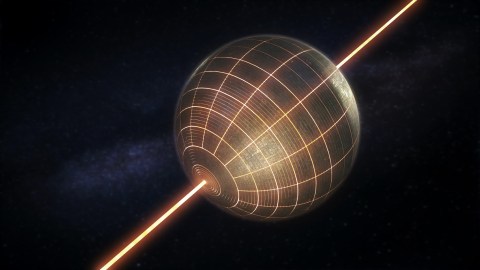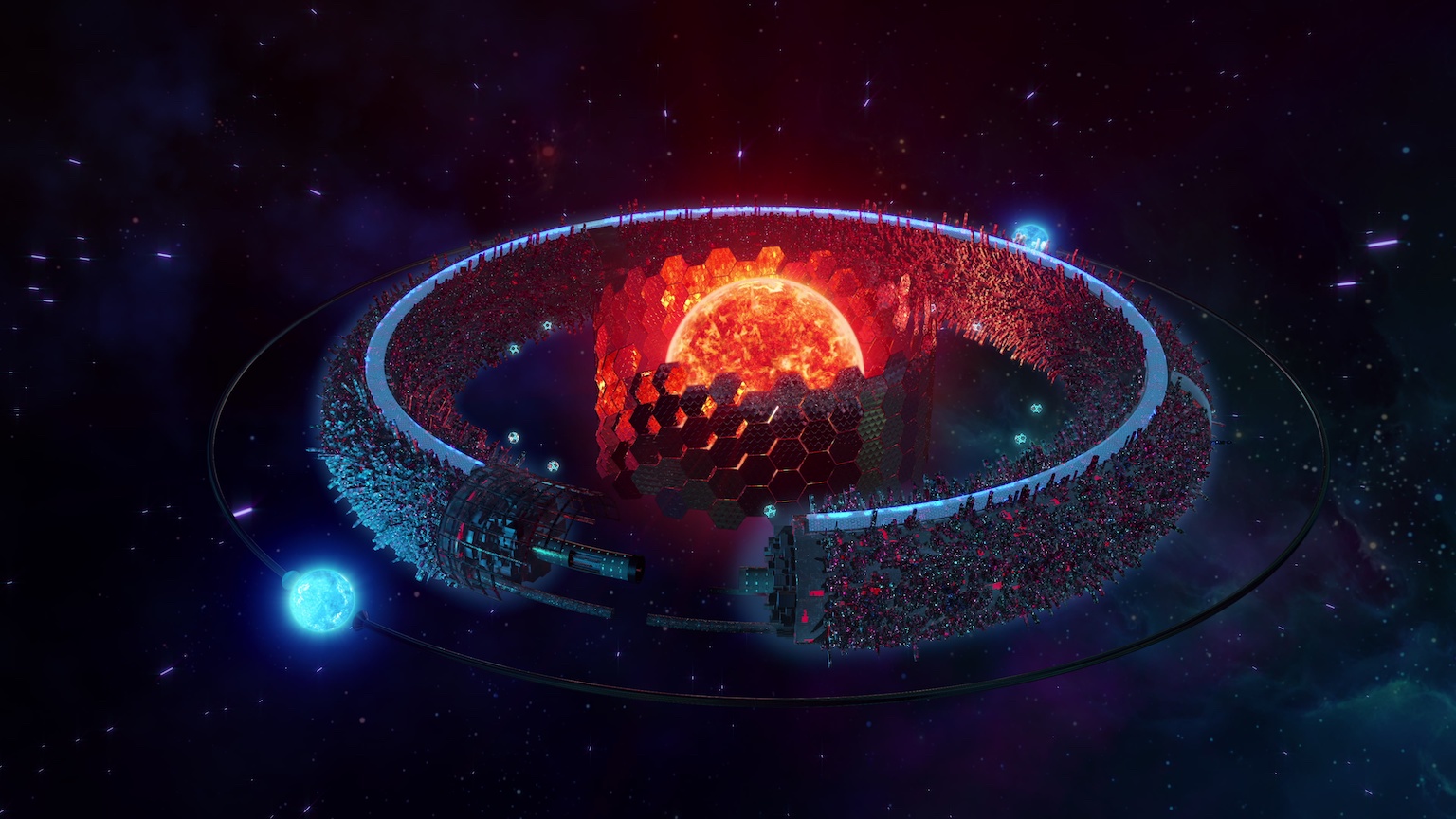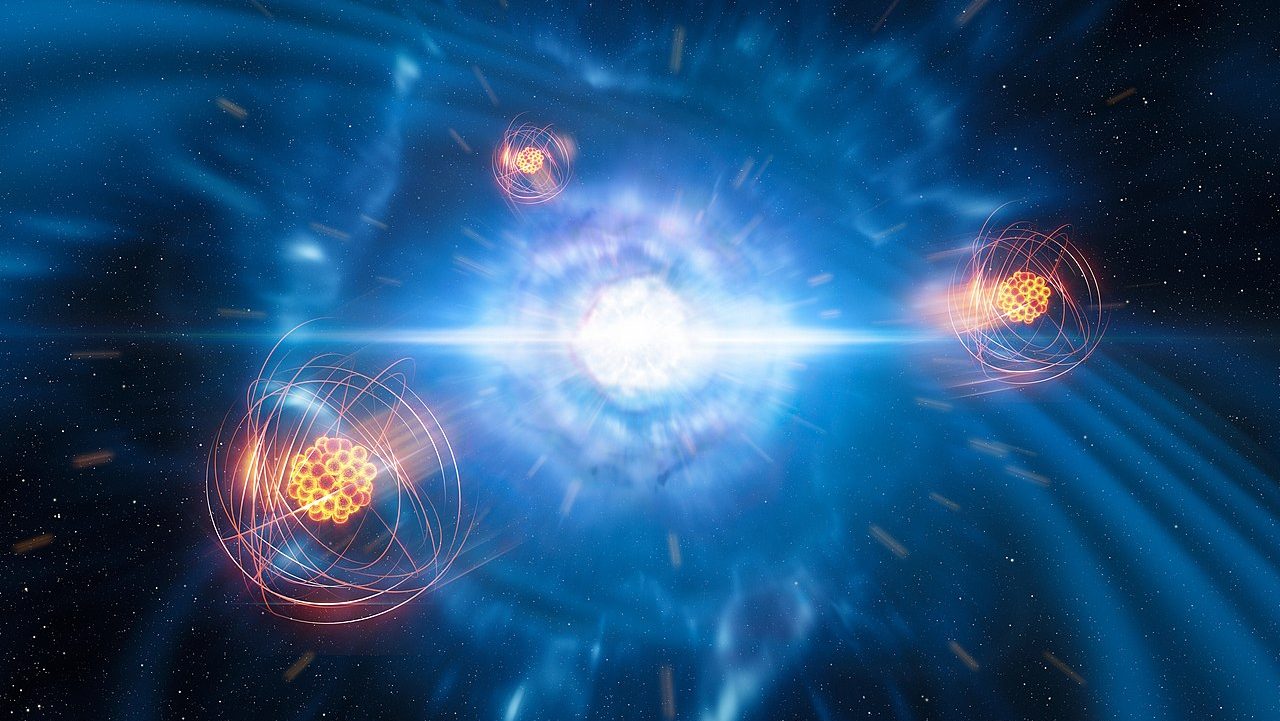Dyson spheres and the quest to detect alien technosignatures

- The concept of a Dyson sphere, envisioned by physicist Freeman Dyson, addresses how advanced civilizations might harness the immense energy of their stars.
- A Dyson sphere, theoretically a vast shell enclosing a star, could capture all its energy, but practical considerations have led to the concept of a “Dyson swarm” of orbiting energy-collecting devices as a more feasible alternative.
- These megastructures, theoretically detectable through their infrared emissions, have been a central theme in SETI research for over 60 years, representing a potential hallmark of advanced technological civilizations and a key target in the ongoing quest to find extraterrestrial life.
What would you do if you were in charge of an immensely powerful technological civilization? This might sound like a dorm-room, too-many-beers kind of question, but it lies at the heart of the search for intelligent life in the Universe. After all, if you are looking for alien technological civilizations, it would help to know what you might be looking for.
In the early 1960s, when people were first starting to think seriously about the possibilities for advanced civilizations in the galaxy, physicist Freeman Dyson asked exactly this kind of question. How, he inquired, would a truly technologically advanced civilization harvest energy? It was the right focus for questions about other civilizations because, while we can’t say much about alien culture or politics, any technologically advanced species would require energy — and likely a lot of it. In this way, Dyson recognized that every civilization that’s climbing up the ladder of technological capacity will easily recognize the big, honking energy source sitting right there at the center of their solar systems: stars.
A typical star produces about 100 million billion billion watts of power. That’s a million times more power produced every second than all the power plants on Earth produce in one year. Dyson imagined that it would be natural for a truly advanced civilization to harvest all this power from their star. This was the birth of the “Dyson sphere,” one of the most enduring ideas in the Search for Extraterrestrial Intelligence (I’ll note that some people still use the term SETI, but as I explain in my new book, these days the field is also known as technosignatures, which refers to any measurable evidence of technology use).
What is a Dyson sphere?
Think of a vast shell, like a hollow golf ball, that’s the size of Earth’s orbit, surrounding and entirely enclosing a star. Covering the inside of the sphere would be some form of light-collecting technology. In this way, it’s theoretically possible that all of the star’s light could be harvested for energy. Besides energy harvesting, a Dyson sphere could serve other purposes, too. With a surface area of more than a billion Earths, a civilization might use a fraction of their Dyson sphere for living space, too. There’s a lot of real estate in there, after all.
Is it physically possible to build a Dyson sphere? Despite being such an audacious idea, Dyson worked out the basic requirements for building such a vast machine. Over the years, other researchers have also dedicated time to working out the details associated with building and operating this archetype of an alien megastructure. They found that for a shell one mile thick with a radius the size of Earth’s orbit, you would need to grind up all the mass held in all the Solar System’s planets. All that mass would have to be processed and used for fabricating the Dyson sphere’s components. So, a typical solar system has the material needed to get the job done even if it would require technology that seems god-like to us.
Dyson swarms
One important point that even Dyson recognized, but which has been subsequently emphasized by astrophysicists like Jason Wright, is that Dyson spheres would not be spheres. An actual rigid sphere would be unstable in many ways, being prone to crash against the Sun or warp and bend itself apart. A better bet is a “Dyson swarm” of vast and freely orbiting machines, each of which collects a subset of the star’s power. With enough swarm members, you’d be able to capture a significant fraction of the stellar energy.
The last and maybe most important point about Dyson spheres and swarms is that they should be observable! The second law of thermodynamics tells us you can’t harvest energy and put it to use without generating “waste” heat. This means Dyson spheres would glow in the infrared, making them an excellent target for technosignature searches. In my recent and very fun conversation with Sean Carrol about the frontiers of astrobiology and technosignature science, he raised the interesting point that maybe an advanced civilization just nests a series of Dyson spheres around a star to capture the radiation emitted from the heat all the way down to the cosmic microwave. It’s a cool idea, though it appears that the return on investment after the first sphere drops so quickly that it’d probably not be worth it.
So, if you oversaw an immensely powerful technological civilization, would you build a Dyson sphere? If your answer is yes, then you are in good company: Dyson spheres (or swarms) have been a staple of SETI for more than 60 years for good reason. They seem likely, and maybe even universal. But is that true? There’s no way to know except to go looking for them.





